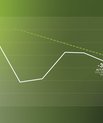Students provide Danske Bank with pearls of wisdom
Students from Business and Social Sciences have given Danske Bank greater insight into future export opportunities for small and medium-sized companies.
Although Europe is currently marked by low growth rates, not all markets in all European countries have been affected. Danish export companies face a challenge to identify where and when they should export their goods.
In an eight-week long competition sponsored by Danske Bank, 28 International Economic Consulting students at the Department of Economics and Business have taken on the challenge, which is enormous from a small and medium-sized company’s perspective.
- During the next six years, the Baltic countries, for instance, will experience economic growth of up to 18%, but markets, which could be of great potential for small and medium-sized companies are Germany and Holland, says MSc student Nina Skau Pedersen from the winning team, which also consists of Emil Jønson Christensen, Josefine Kittelsburg Nielsen and Johannes Bakker.
Germany and Holland most attractive
Within the paper, wood and woodwork industries, the demand for Danish products will increase by approximately 4% per year over the next five years in both Holland and Germany. The demand for machinery will increase by 7% per year in both countries.
- The trade barriers to Germany and Holland are far lower than the Baltic countries. And based on the amount of goods that Germany and Holland import, we believe that these two countries are the most attractive, says Nina Skau Pedersen.
- The work they have carried out is extremely important, and I’m convinced that it will prove even more useful once we have studied it in greater detail, says Henrik Søndergaard Frederiksen, Senior Vice President at Danske Bank.
Prize of DKK 10,000
The four students won the first prize of DKK 10,000 in Danske Bank’s case competition. The objective was to present crucial knowledge on ‘export opportunities and barriers for small and medium-sized Danish companies with focus on exporting to Scandinavia, Northern Europe and Eastern Europe’.
- We’ve spent many nights working on this, so it’s great to finally gain recognition, and we’re very pleased that it will actually be utilised.
The students are currently in the second semester of the Master’s degree programme International Economic Consulting.
Data and method:
Other than growth rates and demand, the students have also taken trade barriers and success factors of various industries in 13 neighbouring markets into account. This is based on an econometric gravity model that defines the influence that market size, cultural differences and geographical distance have on trade between countries. By doing so, the gravity model can define the impact of success factors, and subsequently, it can be used to calculate the future potential of a specific market.
Contact
Nina Skau Pedersen, MSc student
Aarhus University, Business and Social Sciences
Mobile: (+45) 30 26 70 60

Allan Sørensen, Associate Professor
Aarhus University, Business and Social Sciences
Department of Economics and Business
Telephone: (+45) 87 16 49 89
Mobile: (+45) 26 74 68 43
Email: allans@asb.dk
Web









